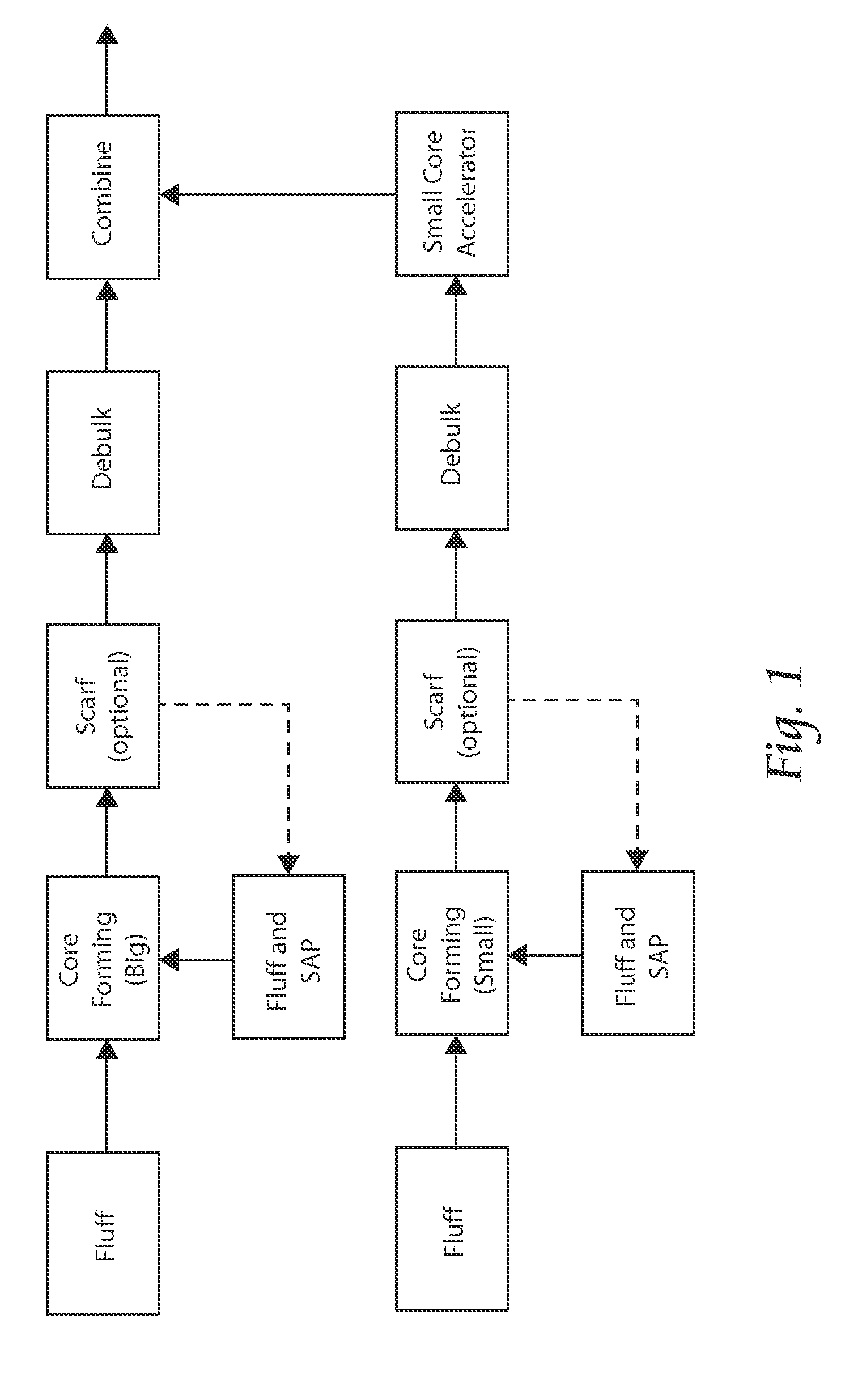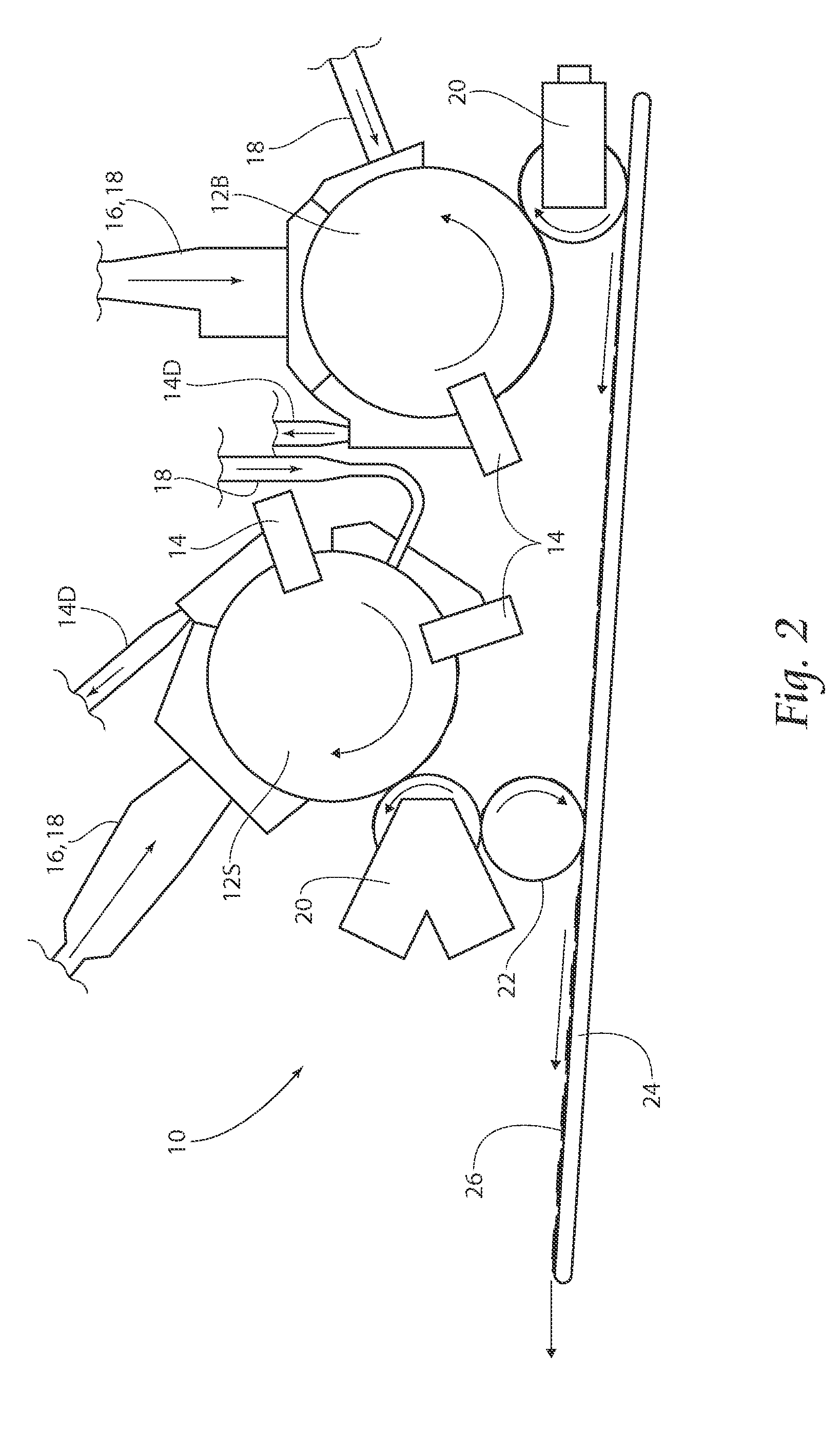Apparatus and method for forming absorbent cores
a technology of absorbent cores and apparatuses, applied in the direction of lamination apparatus, lamination, chemical apparatus and processes, etc., can solve the problems of waste of material resources, complicated chip removal, and inability to adapt machine configurations
- Summary
- Abstract
- Description
- Claims
- Application Information
AI Technical Summary
Benefits of technology
Problems solved by technology
Method used
Image
Examples
second embodiment
[0087]Referring now to FIG. 15, a schematic of the present invention is shown, a large and small continuous core, both formed on a web.
[0088]Referring now to FIG. 16, a side view of a large and small discrete core forming unit, a large and small continuous core, formed on a web is shown. The first step in the sequence of formation of both the big and small cores is introduction of a non-woven web 50. Atop this layer is applied fluff 28 by fluff introduction unit 18. Next, SAP / fluff mix 30 is applied through the SAP / Fluff introduction system 40. An optional scarfing unit 14 can be used (recycled scarf material recycled through scarf recycling pathway 14D), followed by a debulking unit 20. As can be seen in FIG. 17, the drums 12B and 12S of this system can have a continuous pocket for forming a running web of continuous core material (cut to discrete core pieces by a core knife, described later). As shown in FIGS. 18A and 18B, plan views of a big and small continuous core 46B and 46S ...
third embodiment
[0090]Referring now to FIG. 29, a schematic of the present invention, a single two or three-dimensional core formed on a screen (and / or formed on web), and then passed downstream for further processing is shown.
[0091]In this embodiment, as shown in FIG. 30, a side view of a single three-dimensional core formed on a screen core forming unit, a first fluff layer 28 from the fluff introduction unit 18 is deposited onto the drum 12 (with a three dimensional pocket, FIG. 31), followed by SAP / Fluff mixture 30 through introduction unit 16 / 18. Scarfing unit 14 is employed followed by a transfer roll 20, (debulking / embossing, or two debulking units, and an optional knife42). The scarfing unit 14 of this embodiment could scarf outer boundaries of the composite core 56 (FIG. 32), or a debulker could compress the shape by a pocket component to result in the three-dimensional, two layer profile shown in FIG. 37 (shown in plan on FIG. 38). In the embodiment of FIGS. 37 ad 38, the cores have ident...
PUM
| Property | Measurement | Unit |
|---|---|---|
| Length | aaaaa | aaaaa |
| Speed | aaaaa | aaaaa |
| Shape | aaaaa | aaaaa |
Abstract
Description
Claims
Application Information
 Login to View More
Login to View More - R&D
- Intellectual Property
- Life Sciences
- Materials
- Tech Scout
- Unparalleled Data Quality
- Higher Quality Content
- 60% Fewer Hallucinations
Browse by: Latest US Patents, China's latest patents, Technical Efficacy Thesaurus, Application Domain, Technology Topic, Popular Technical Reports.
© 2025 PatSnap. All rights reserved.Legal|Privacy policy|Modern Slavery Act Transparency Statement|Sitemap|About US| Contact US: help@patsnap.com



